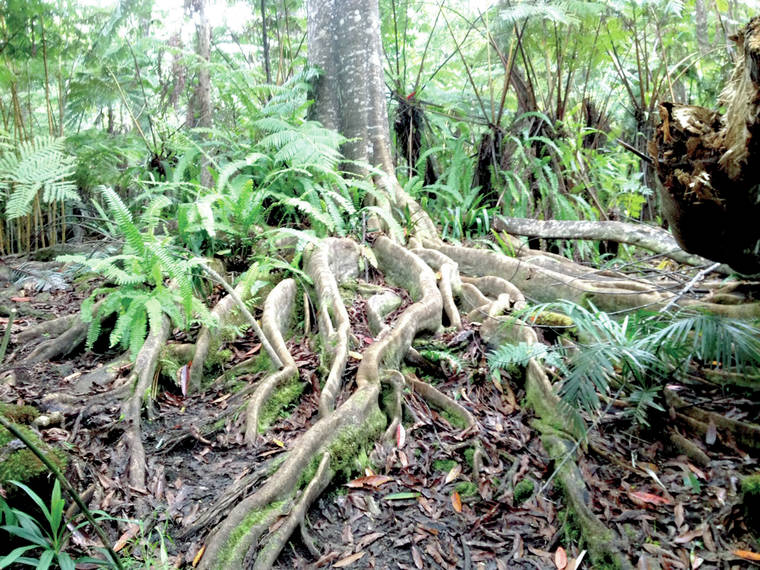It might be too early to think about New Year’s resolutions, but look at the big stores already promoting Christmas and it isn’t even Halloween!
Resolutions are fun to make every year, but it is sometimes hard to measure their success. Learning about landscaping and gardening is a good example.
Hawaii is unique in its horticultural blend of plants and landscapes. Although we live in the tropics, gardening is heavily influenced by the ways of Europe and the Americas. This plus Asian, Polynesian and African agricultural influences have made landscaping and gardening fun — but a bit complicated.
Fortunately, the University of Hawaii College of Tropical Agriculture and Human Resources has been active in the development of the Master Gardener program in Hawaii County. If you decide to get involved with the program, you will have 45 hours of classroom and hands-on horticultural training, plus ongoing continuing education. Course topics include basic botany, native plants, nutrition, insect and disease management, propagation, pruning and much more.
Once you finish the course you become a local expert to assist others to be better gardeners. Master Gardeners also have several outings each year and get involved with community landscape projects.
Registration for the 2020 class series closes Nov. 15, so you will want to register as soon as possible. Classes start Jan. 14 and run from 9 a.m.-noon each Tuesday through April 7.
The program includes field trips such as visiting the Kona Cloud Forest Sanctuary in Kaloko Mauka, where prospective and seasoned Master Gardeners will plant native hibiscus and collect seed of the famous blue marble trees used in the making of Buddhist prayer beads.
For more information or inquire about getting a blue marble plant, contact Master Gardener Gary Kastle at 929-8726.
The sanctuary is a 70-acre forest dedicated to teaching living forest-friendly and reminding folks that our forests are the lungs of the planet. Most of the land is native forest, but 15 acres that were originally pasture are now totally reforested with a variety of plants and trees donated by plant societies and the state Department of Land and Natural Resources Division of Forestry and Wildlife. Once the aggressive kikuyu grass was suppressed by shade, many native plants began to re-establish themselves.
Hawaii Island Land Trust and Moku Keawe Land Conservancy are cooperating in preserving the sanctuary forest.
For information about the conservancy, contact Janet Britt at 769-4343 or by email at Janetbritt50@gmail.com.
To learn more about the Master Gardener program in West Hawaii, contact UH Extension agent Ty McDonald at 322-4893 or by email at tym@hawaii.edu. In East Hawaii, call Extension agent Eli Isele at 969-8209 or by email at elihu@hawaii.edu.
Another way to learn and apply your horticultural knowledge is to join a plant society such as the Hawaii Island Palm Society, Hawaii Chapter of the American Rhododendron Society or one of the many orchid societies. We also have societies and associations focusing on coffee, tea, nuts and tropical fruits.
Information about getting in touch with these organizations is available online or by contacting the UH College of Tropical Agriculture and Human Resources offices in Hilo and Kona. Getting connected with local plant enthusiasts is a great way to expand your knowledge with others of our island community and make friends.



